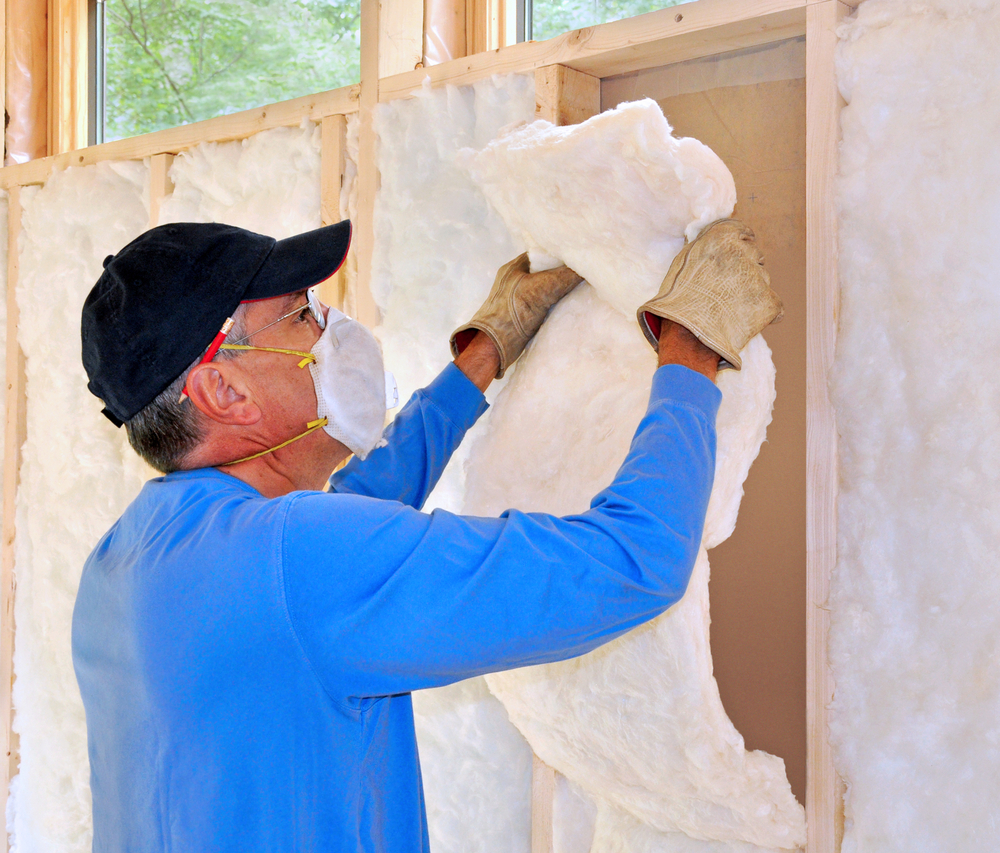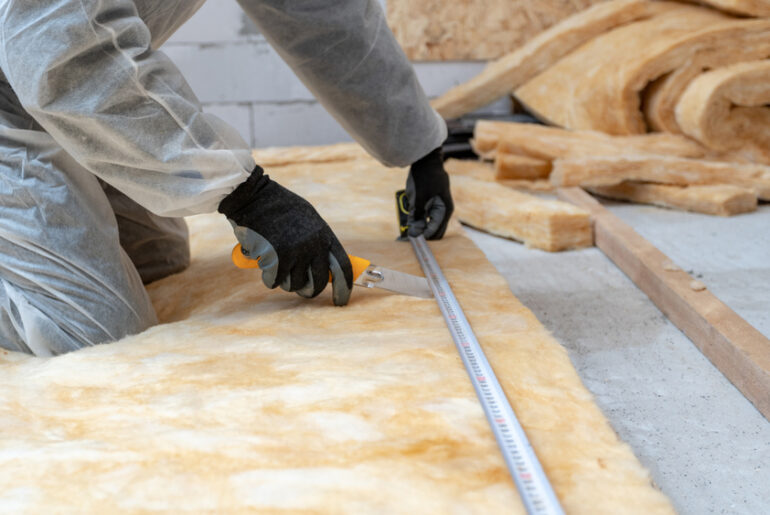Fiberglass is a versatile material used to manufacture sporting items, automobiles, structures, and home insulation. A safety data sheet (1) for fiberglass (SDS) states that it is an “eye, skin and respiratory tract irritant.”
In addition to causing “mechanical irritation” after direct contact with the skin, fiberglass may irritate the throat, nose, and mouth after inhalation. According to the Illinois Department of Health datasheet (2), fiberglass strands or particles are easily inhaled. Air passage mucous membranes are highly susceptible to foreign particles. The inhaled particles may irritate these membranes and result in “bronchitis-like symptoms” or discolored phlegm.
Why Breathing Fiberglass Is Dangerous?
Inhaling fiberglass can cause irritation in the respiratory system, but most people are able to recover quickly without any long-lasting damage (3). Although some fiberglass fibers may end up in the lungs, the majority are broken down (4) and eliminated by the body after ten days (5) of inhalation exposure.
Inhaling large amounts of airborne fiberglass can result in bronchitis-like symptoms (6), whereas low levels of exposure will only produce respiratory irritation. For those with asthma, breathing in fiberglass might worsen their symptoms and potentially cause an asthma attack.
The majority of exposure symptoms are restricted to throat, nose, skin, and eye discomfort. You can reduce exposure and irritation levels by washing exposed skin with soap to remove any fibers and flushing your eyes with water.
The most commonly reported symptoms by those who have inhaled fiberglass include:
- upper respiratory infections
- wheezing
- lung aggravation
- coughing
- increase in asthma symptoms
Fiberglass Is Inhalable and Respirable
An object is deemed to be inhalable if it can enter the upper respiratory system. It is also regarded as respirable if it can penetrate further and enter the lungs and lung alveoli. In other words, fiberglass dust is within the range of particle sizes that can be inhaled and respired.
Fine fibers can range in diameter from 1 to 10 micrometers (m) and can be up to 30 to 50 m long. At the same time, some manufacturers can produce fibers that are larger than that.
The US Department of Health and Human Services (USDHHS) says (7) shorter and thinner particles can’t cover enough distance to reach the lungs. Thus, the smaller, thinner glass fibers — less than 2 m in diameter, and even those up to 4 m — have a tendency to remain in the upper respiratory tract and be breathed back out. Longer particles — 15 m or longer — can, nevertheless, reach the alveolar regions of the lungs.
Keep in mind that the fiberglass fibers are purposefully broken up to make them shorter by the manufacters (and others by the body (8)); only a small portion of them are respirable. In other words, the majority of the fiberglass fibers will be quickly ingested and expelled from your body before reaching your lungs.
Fiberglass fibers are just inhalable and don’t pose a significant risk to your health in most cases. There is insufficient proof to say that fiberglass insulation fibers inhaled by people can lead to cancer. The California Prop 65 label (9) was also changed to more accurately represent this reality.
Fiberglass Insulation Has Low Biopersistence
A biosoluble fiber easily leaves the lungs after dissolving. However, a biopersistent fiber does not quickly disintegrate and remains in the lungs.
In the lungs and trachea, fiberglass can be considered biopersistent (10). But remember, according to the National Insulation Association (11), just a tiny fraction, about 1%, of fiberglass particles are biopersistent.
Longer fibers are more likely to enter the lungs, although they disintegrate more quickly than shorter fibers do. According to a study (12) done by the U.S. Navy, fibers longer than 20 m generally disappeared within 50 days of inhalation, although shorter fibers took up to a year or more.
How To Protect Yourself From Fiberglass Breathable Particles?
Wearing the proper personal protective gear will prevent fiberglass exposure for anyone handling insulation. The fibers won’t be able to get inside the eyes if you wear safety glasses or goggles, and masks that cover the mouth and nose can stop people from swallowing or breathing the fibers.
Gloves may minimize irritation by reducing skin contact with the fiberglass batts or rolls. Additionallymasks with respirators should be used when handling fiberglass insulation for an extended period. Work in well-ventilated places to minimize fiberglass dust exposure. Opening windows or doors and using a shop vacuum to clear fiberglass dust from the work area both help to lower dust levels.
The danger of irritation and harm can be decreased by choosing the appropriate clothing to limit contact with the fibers. When handling fiberglass insulation, wear long sleeves and pants. The fabric will reduce the possibility of fibers contacting the body and stop fiberglass particles from hurting the skin.
After working with fiberglass, any clothing worn should be washed separately from other clothing. Before washing other loads of laundry, thoroughly rinse the washing machine.
What to Do If You Inhaled Fiberglass?
Unfortunately, fiberglass cannot be removed from your throat or lungs; yet, it will ultimately work its way through your body. The main risk is prolonged exposure, which can result in chronic diseases like asthma.
Seek medical help right away if you start noticing severe symptoms after breathing in fiberglass because they could worsen if left untreated.
Sources
- Menard C. (2014) SAFETY DATA SHEET (SDS). https://hw.menardc.com/main/items/media/ADOPR001/SDS/SDSKnaufGuardian.PDF
- Illinois Department of Public Health. Environmental Health Fact Sheet. http://www.idph.state.il.us/envhealth/factsheets/fiberglass.htm
- Europe PMC. (1994). A comparison of human exposures to fiberglass with those used in a recent rat chronic inhalation study. https://europepmc.org/article/med/7724854
- University of Buffalo. (2003) UB surface scientists solve riddle of fiberglass pathogenicity. https://www.buffalo.edu/ubreporter/archive/vol35/vol35n9/articles/Fiberglass.html
- National Library of Medicine. (2000) Review of the U.S. Navy’s Exposure Standard for Manufactured Vitreous Fibers. https://www.ncbi.nlm.nih.gov/books/NBK208394/
- Illinois Department of Public Health. Fiberglass. https://dph.illinois.gov/topics-services/environmental-health-protection/toxicology/hazardous-substances/fiberglass.html
- National Toxicology Program. (1994) Certain Glass Wool Fibers (Inhalable). https://ntp.niehs.nih.gov/ntp/roc/content/profiles/glasswoolfibers.pdf
- University of Buffalo. (2003) UB surface scientists solve riddle of fiberglass pathogenicity. https://www.buffalo.edu/ubreporter/archive/vol35/vol35n9/articles/Fiberglass.html
- The Office of Environmental Health Hazard Assessment. (2011) Modification of the Listing of Glasswool Fibers (Airborne Particles of Respirable Size) to Glass Wool Fibers (Inhalable and Biopersistent) https://oehha.ca.gov/proposition-65/crnr/modification-listing-glasswool-fibers-airborne-particles-respirable-size-glass
- National Library of Medicine. (2000) Review of the U.S. Navy’s Exposure Standard for Manufactured Vitreous Fibers. https://www.ncbi.nlm.nih.gov/books/NBK208394/
- National Insulation Association. (2010) Cancer Warning Labels Removed from Fiberglass Building Insulation Products. https://insulation.org/io/articles/cancer-warning-labels-removed-from-fiberglass-building-insulation-products/
- National Library of Medicine. (2000) Review of the U.S. Navy’s Exposure Standard for Manufactured Vitreous Fibers. https://www.ncbi.nlm.nih.gov/books/NBK208394/





